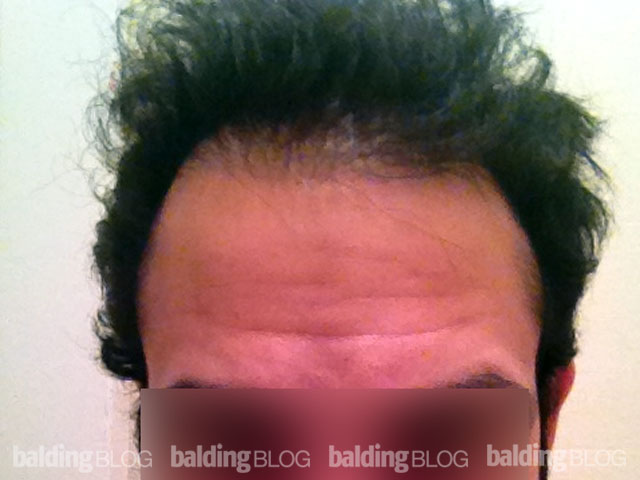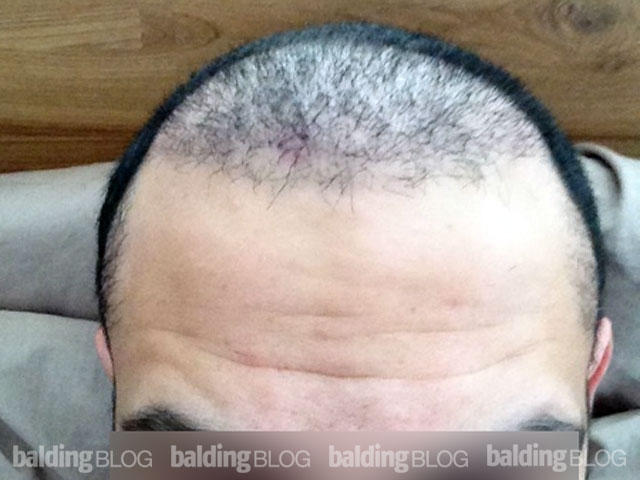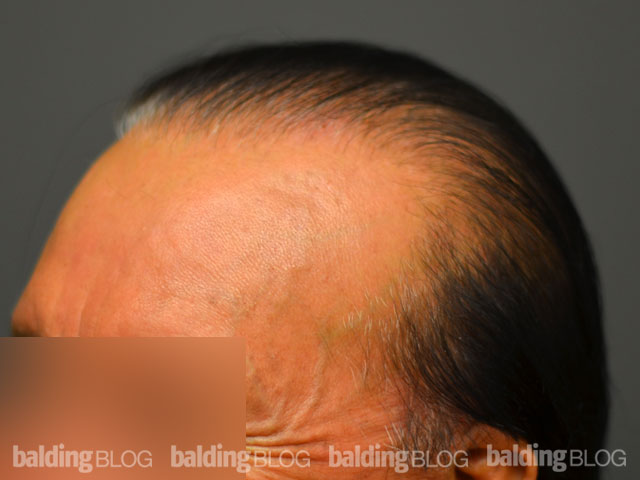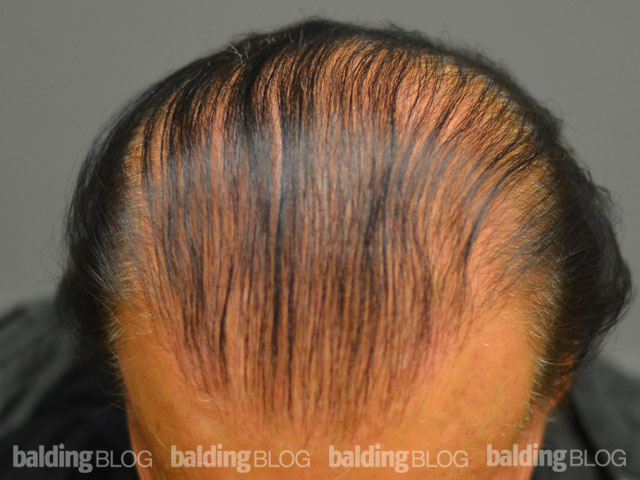hi, two weeks after a surgery with dr. rahal of 2846 grafts (888 1 hair, 1526 2-hairs, 429 3-hairs, and 3 4-hairs), i experienced a massive shock loss. it has been one month post surgery and i am very worried about even going to my original look, which at this point i would be happy with. i only take minoxidil, because of the side effects of finasteride.
do you see a lot of this shock loss from the pics as being temporary, because although i am thinning, i am not an entirely diffuse thinner, but lost everything. at this point would total of the 5239 hairs even be enough to fill in what i have lost? i should also note that the hairs that are remaining are ones from a previous surgery with ziering that was supposed to be around 2300 grafts, but i am not even entirely sure about his work.
thank you so much for your help and suggestions, greatly appreciated!

Click the photos to enlarge:
It is difficult to make many comments about your exact situation, because the before picture and the change in your hair length are confusing your situation. I will assume that you are young (under 30 years old). Were you afraid of possible side effects from finasteride, or did you actually experience them? Shock loss is common in young men after a hair transplant, unless the young man is protected with Propecia (finasteride). Prior to the appearance of this drug on the market, shock loss was a common problem for hair transplant surgeons. Since the use of finasteride, this type of report is relatively uncommon.
Shock loss usually appears in the first three months after a surgery, when it happens. I do not believe that the size (# of grafts) is related to the shock loss, as a hair transplant of any size can do it. Shock loss reflects your genetic timelines and often accelerates the timelines 1-3 years.
Doctor, compare about eyebrow transplant and hair transplant. Which has higher success rate and why?



 Delaying the need for surgery is sort of the point.
Delaying the need for surgery is sort of the point.






